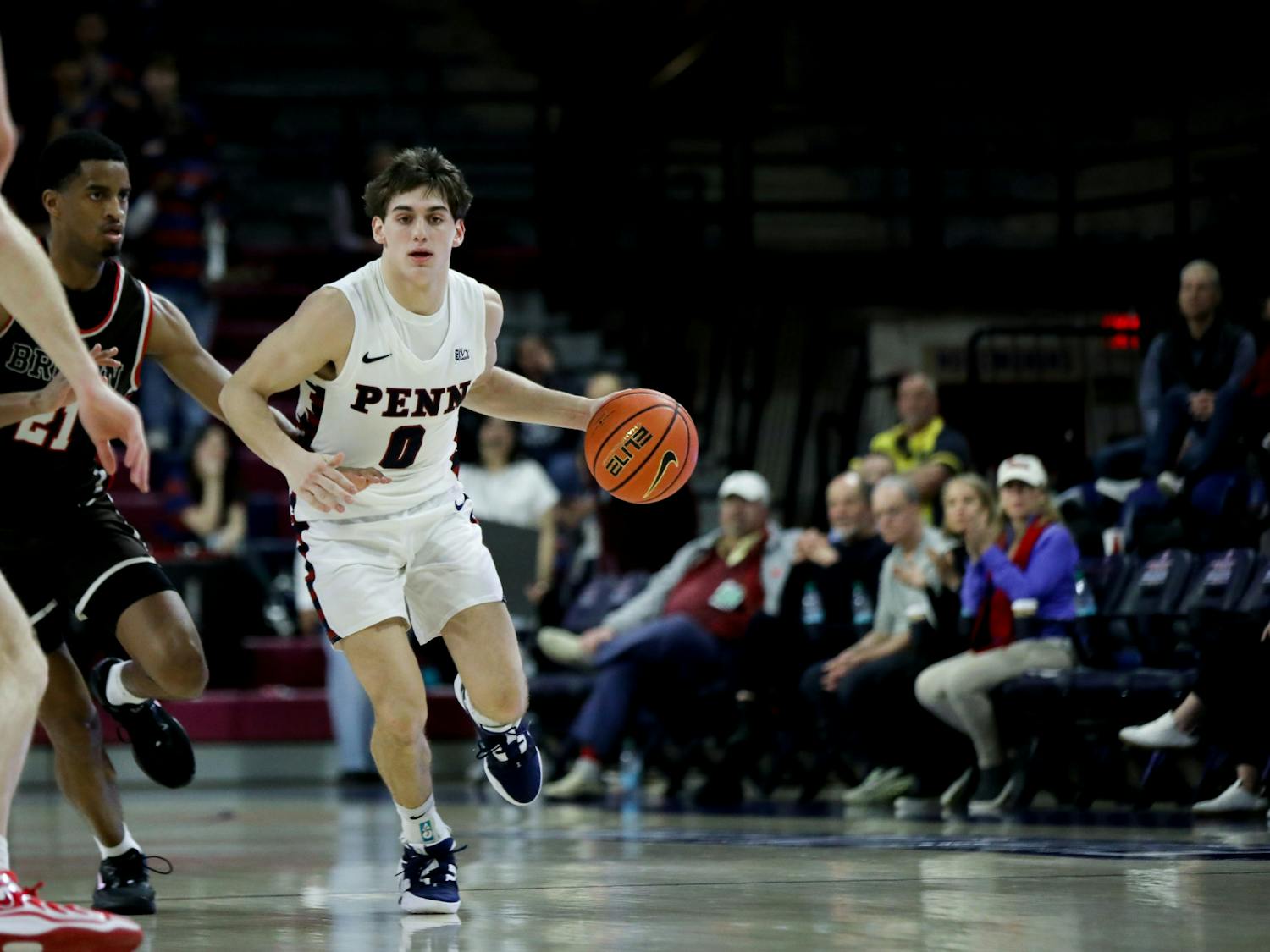Penn will lose tomorrow in one of the highest-scoring games in the history of the NCAA Tournament.
At least that's what a video game simulation matching up No. 2 Texas and No. 15 Penn on a neutral floor predicts.
In a game played on EA Sports' March Madness 2006, the Longhorns rolled to a 112-85 victory.
The Quakers played extremely well for the first 10 minutes of the contest -- a trend that is similar to their real-life performance in NCAA Tournament games of late. Penn held a 26-25 lead with 10:30 remaining in the first half.
Junior forward Mark Zoller spent much of the first half on the bench after picking up two fouls in the first five minutes of the game.
And after Zoller's frontcourt partner Steve Danley got his second foul a quarter into the game, Texas went on a 19-5 run to close the half and it was all Longhorns from there on.
Despite Texas' size advantage, Penn was able to hang with them on the boards. The Longhorns only outrebounded the Quakers 35-32.
Instead, Texas won thanks to phenomenal shooting. The Longhorns shot 59.2 percent from the field and 52.9 percent from beyond the three-point arc.
Penn, on the other hand, shot a solid 48.7 from the field, but made just 23.1 percent of its shots from downtown.
Texas swingman P J Tucker led all scorers with 38 points, 24 of those points coming in the first half. He also grabbed eight rebounds and shot 65 percent from the field.
Senior guard Kenton Paulino scored 22; sophomore forward LaMarcus Aldridge had 16; sophomore guard Daniel Gibson had 14; and junior guard Craig Winder also had 14.
Not surprisingly, Ivy League Player of the Year Ibrahim Jaaber was Penn's leading scorer, with 21. The junior guard also recorded six assists, four rebounds and three steals.
Sophomore guard David Whitehurst recorded a double-double with 19 points and 10 assists.
With Zoller and Danley in foul trouble for much of the game, sophomore Brian Grandieri (who did not play last season due to injury) was a force to be reckoned with off the bench. He scored 16 points, making him the team's second-leading scorer.
It's worth noting, however, that Grandieri was given the stats of a player who wears jersey number 21, not the sophomore's usual number 1. He is now the first man off the Penn bench and is not on the roster in the video game.
Danley scored 12 points, Zoller had six and senior swingman Friedrich Ebede had five.
Senior guard Eric Osmundson isn't on the roster in the game and was given the stats of Ryan Petinella, who is a starter in the game but is no longer at Penn. Petinella's stats (six points, seven rebounds) were given to Osmundson, even though the two play different positions.
The game featured lots of turnovers (22 for Texas and 20 for Penn), leading to a fast-paced transition game that caused the scoring to be so high. The Quakers had 16 steals compared to the Longhorns' 14.
And while rebounding wasn't a big problem for the Quakers against the NBA-level talent in Texas' frontcourt, the Longhorns' big men were able to make their presence felt in other ways. The team combined for 10 blocks, five of which came from Aldridge.
So how accurate is this video-game simulation?
Last year it correctly predicted the result of the Penn-Boston College NCAA Tournament game. Even the score and story of the game were mostly accurate.
However, at the beginning of this season the simulation predicted that the Quakers wouldn't even make the NCAA Tournament.
It also predicted that North Carolina State would win the national title. The Wolfpack is a No. 10 seed in Penn's pod in Dallas. Should N.C. State win tomorrow, it would play the winner of the Penn-Texas game.








